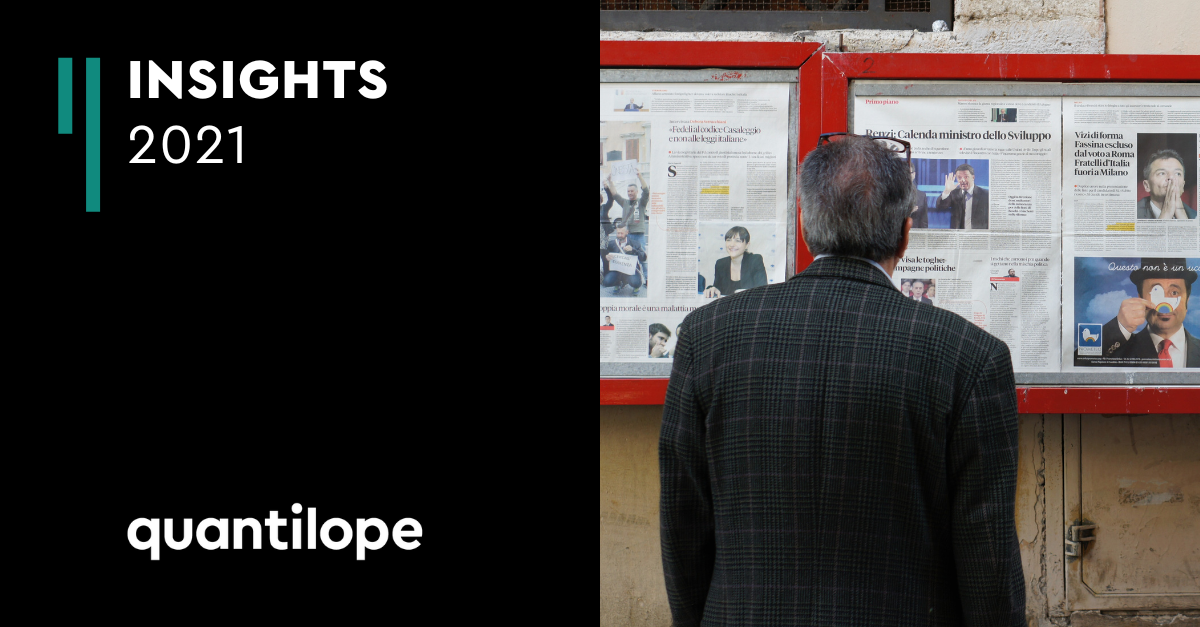Fake news might be a relatively recent phenomenon, but whether to believe what we hear is something that market researchers have been grappling with for a long time.
There was a time, wasn’t there, when we felt relatively confident trusting what we heard in the news (excepting of course the obvious red-top sensations of the ‘I was abducted by aliens’ variety)? But these days, even when reading the most innocuous economic report, the niggling question often creeps in: is this true?
Fake news might be a relatively recent phenomenon, but whether to believe what we hear is something that market researchers have been grappling with for a long time. We are careful not to take what a respondent says at face value – not necessarily because they’re lying, but because they are saying what they think the interviewer wants to hear, they don’t consider their response before giving it, they are repeating received wisdom, or they are anxious not to be seen as negative (amongst other reasons).
There are, of course, many truthful news reports online, but fake news is easier to generate if the author hides behind an anonymous online identity. This is a well-known problem in any web-based forum; people are much more likely to express exaggerated or aggressive views if they don’t have to speak them out loud to a real live person, and it is very hard to tell if those views are genuine. So it goes with market research: when respondents have to show their face while expressing an opinion, the situation is more ‘real’ and they are more likely to say what they really feel. More likely to, but not guaranteed to.
This is why online video surveys work so well. Firstly, a context is created where respondents feel they are really being listened to; they know they will be watched, so they are keen to have their say – and for many this breeds honesty. Secondly, if for some reason they are not as honest as they could be (perhaps because they will be watched, so they might tone down their responses), just watching them speak gives the viewer the chance to properly assess their opinions. So the respondent might not say entirely what they feel, but they will certainly show it.
We all know instinctively when somebody is saying one thing but means another; their body language and facial expressions give them away. Leonard Mlodinow, a theoretical physicist, explains in his book ‘Subliminal: How Your Unconscious Mind Rules Your Behavior’ that our ‘nonverbal communication may reveal more than our carefully chosen words, and sometimes be at odds with them.’ He also says that humans are incredibly good at knowing if someone is telling the truth or not, and describes an experiment where small lights were placed at key positions on people’s bodies, and surrounding lighting dimmed so that viewers could see the small lights but not the body or face itself. When participants acted out certain emotions, viewers were able to identify those emotions just by watching the movement of the lights.
Our brains can also detect what scientists term ‘microexpressions’: involuntary facial expressions that happen very quickly (1/15 to 1/25 of a second), but which we are nonetheless aware of and can practise reading. These seven expressions - disgust, anger, fear, sadness, happiness, surprise, and contempt – can all give a clue as to how someone is really feeling, even if they say the opposite. But more prolonged or repeated gestures also contribute to nonverbal understanding: if the speaker touches his nose, stands very still, changes his head position quickly, points a lot, repeats himself, provides too much information or touches his mouth, he might not be telling the whole truth.
We need your consent to load YouTube!
We use YouTube to embed job offers on our page. YouTube may collect data about your activity. By clicking on "Accept" you consent to the data processing according to our Consent Management Platform. You can find out more about the service via "More information". You can revoke your consent at any time with effect for the future.
Changes head position quickly, points a lot, repeats himself?...
But even without analysing specific aspects of people’s facial movements, we all know that when there seems to be a disconnect between what someone says and how they say it, we get a better understanding of any concealed feelings. As online survey tools for research go, if you really want to get a handle on how people feel about your product or service, you can’t beat video.



.png)
